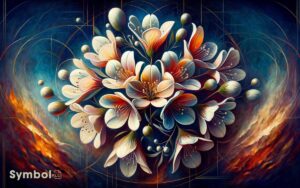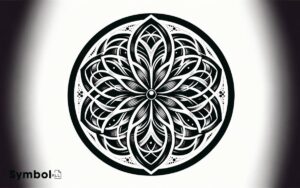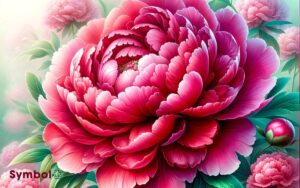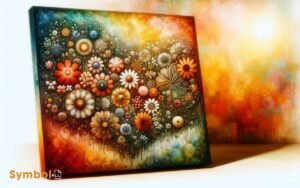What Does the Flower Symbol Mean on Facebook? Gratitude!
The flower symbol on Facebook, introduced during Mother’s Day, has become a unique way to show love, appreciation, and gratitude online.
Unlike the usual ‘Like’ or ‘Love’ reactions, this digital flower bridges traditional symbols with modern connectivity, adding emotional weight to your interactions.
It’s perfect for moments when you want to offer comfort, express empathy, or celebrate special occasions without words. By selecting the flower icon, you’re sending a warm, supportive gesture that enhances connections within the Facebook community.
Curious about other expressions and how the flower compares? There’s more to uncover about the dynamic world of Facebook symbols.
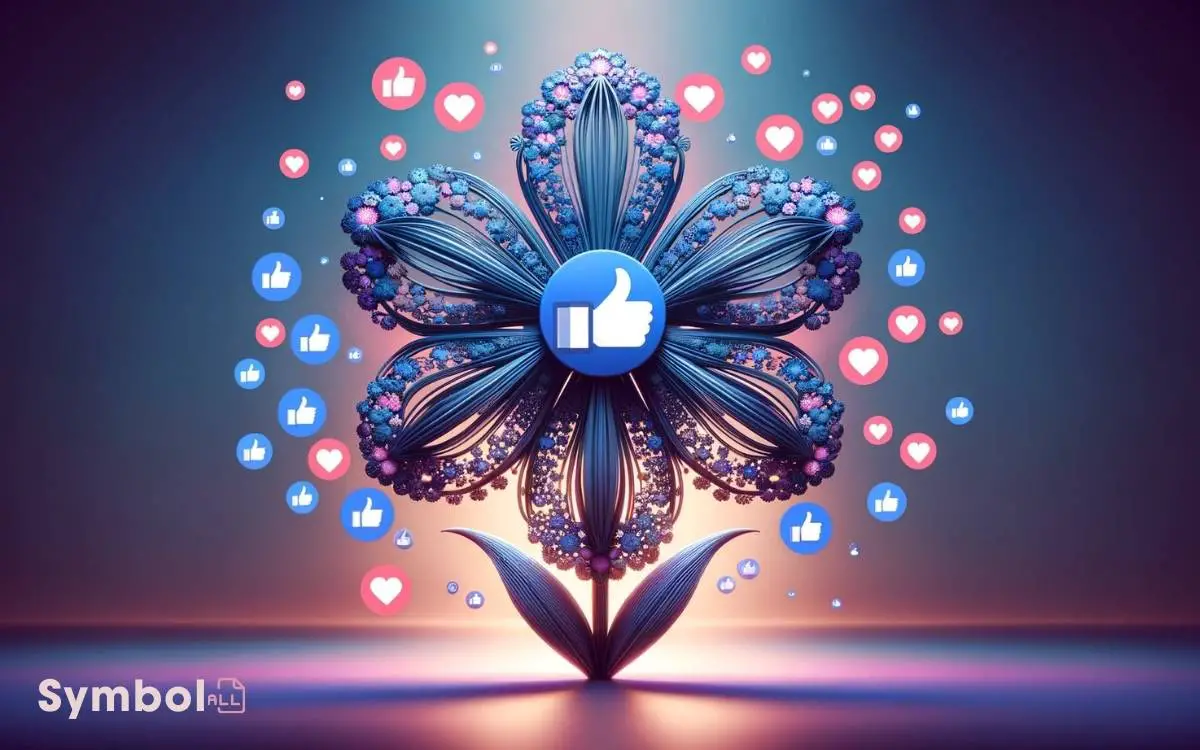
Key Takeaways
Origin of the Flower Symbol
The flower symbol on Facebook, first introduced during Mother’s Day celebrations, quickly blossomed into a popular way for users to express gratitude and love.
You might’ve noticed it popping up around that time, adding a fresh, vibrant touch to the usual reactions available.
This special feature wasn’t permanent at first; it made its debut as a temporary reaction, allowing people to acknowledge posts and comments in a uniquely heartfelt way.
The idea was simple yet effective: to give users a new tool to spread positivity and affection across the platform, especially during occasions celebrating mothers and mother figures.
Its reception was overwhelmingly positive, highlighting how a small digital gesture can carry significant emotional weight.
Symbolic Meanings Explained
You’ve seen the Facebook flower symbol, but have you ever wondered what it truly means?
Let’s explore its historical roots, modern interpretations, and cultural significance to understand its impact better.
From ancient times to digital age expressions, this symbol carries diverse meanings across different contexts.
Flower Symbol Origins
Delving into the origins of the Facebook flower symbol, it’s fascinating to uncover its symbolic meanings and the rich history behind this digital icon.
Historically, flowers have been embedded with symbolism across cultures, representing emotions, messages, and even deep societal values.
The Facebook flower emoji, introduced as a temporary reaction to celebrate Mother’s Day, carries a similar essence of appreciation, love, and gratitude.
Drawing from the tradition where flowers are given as tokens of affection and respect, the symbol’s use on the platform extends these sentiments into the digital domain.
It’s a nod to the age-old practice of expressing feelings through the beauty of flora, reimagined for social media interactions. This digital flower continues to bloom, bridging traditional symbolism with modern connectivity.
Modern Interpretation
Building on its historical roots, let’s explore how the Facebook flower symbol‘s meanings resonate in today’s digital age.
Initially, you might see it as a simple, decorative icon. Yet, its significance runs deeper, symbolizing gratitude, admiration, and the blossoming of new ideas or relationships.
When you come across the flower react on a post, it’s more than just a like; it’s a way of expressing a warm, positive connection to the content or its creator.
This subtle but powerful tool enhances communication, allowing you to convey feelings that words alone mightn’t fully capture.
Cultural Significance
Exploring the cultural significance of the Facebook flower symbol reveals its deep-rooted meanings across various societies, embodying emotions from respect to renewal.
For many, it’s a universal sign of love, gratitude, and sympathy, easily crossing language and cultural barriers.
In some cultures, flowers symbolize the cycle of life and death, marking both beginnings and farewells with equal reverence. They’re often used to express what words can’t, offering comfort or celebration in life’s pivotal moments.
The Facebook flower reacts not just as a digital gesture, but as a bridge connecting these ancient symbols to our modern ways of communication.
It lets you convey a spectrum of feelings, from admiration to compassion, with a simple click, enriching your interactions with a layer of cultural heritage.
Emotional Significance
You’ve likely seen the Facebook flower symbol and wondered about its emotional weight. It’s a powerful way to express empathy and show support online, acting as a digital gesture that bridges distances.
Let’s explore how this symbol transforms pixels into a meaningful connection.
Expressing Empathy Online
Expressing empathy online, the Facebook flower symbol offers a nuanced way to show support and understanding without words.
In the digital domain, where tone and emotion are often lost in translation, this symbol serves as a bridge, conveying feelings that might be hard to articulate through text alone.
It’s a visual shorthand that you can use to let someone know you’re there for them, sharing in their moment of joy, sorrow, or reflection.
This emblem, steeped in emotional significance, allows for a deeper connection between friends and family, transcending the limitations of traditional text-based communication.
Digital Gesture of Support
In today’s digital world, the Facebook flower symbol emerges as a powerful gesture of support, carrying profound emotional significance for both the sender and receiver. When you tap that flower icon, you’re doing more than just hitting a button.
You’re sending a message that transcends words. It’s a way to say, ‘I’m here for you,’ or ‘I understand what you’re going through,’ without having to articulate your feelings explicitly.
This digital gesture of support bridges the gap between physical distance and emotional closeness. It’s a reminder that, even in the vastness of the internet, personal connections and empathy still flourish.
By choosing the flower symbol, you’re partaking in a shared understanding, offering comfort and solidarity to someone in their moment of need.
How to Use the Flower Icon
To use the flower icon on Facebook, simply tap or click on the reaction button beneath any post where you want to express gratitude or celebration.
It’s a digital way of sending a bouquet to friends or family, letting them know you appreciate them or their post. When you choose this icon, you’re adding a layer of warmth and appreciation to your interaction.
- Brings a smile to someone’s day, making them feel valued.
- Encourages positivity within your social network, spreading joy.
- Acknowledges special moments without words, conveying feelings of gratitude and celebration.
Embracing this feature on Facebook enhances your interactions, making them more meaningful. It’s a simple yet powerful tool to show you care.
Special Occasions and Events
Countless special occasions and events become even more memorable when you mark them with Facebook’s flower icon, directly showing your support and joy.
Whether it’s celebrating a friend’s achievement or recognizing a global event, the flower symbol lets you express heartfelt emotions without words. It’s a universal language of sentiment, speaking volumes through colors and arrangements. From roses symbolizing love to lilies representing purity, each bloom carries its own unique meaning. If you’re wondering what flower symbolizes missing someone, the answer often points to the delicate forget-me-not, a timeless emblem of remembrance and longing.
Here’s how the flower icon can add a special touch to various occasions:
| Occasion | Emotion Elicited | Example Use |
|---|---|---|
| Birthdays | Joy | Congratulating a friend |
| Mother’s Day | Appreciation | Honoring all mothers |
| International Women’s Day | Empowerment | Celebrating women’s achievements |
| Earth Day | Awareness | Promoting environmental care |
Embrace these moments with the flower icon, creating a more connected and supportive online community.
User Reactions and Interpretations
Users often share varied reactions and interpretations when they see the Facebook flower symbol, reflecting a broad spectrum of emotions and thoughts.
This symbol can evoke a range of feelings, from appreciation for its aesthetic to curiosity about its meaning. It’s a unique way to interact on the platform, and you might find it intriguing how differently people perceive it.
- Joy: Many feel a burst of happiness, seeing it as a sign of positivity and celebration.
- Confusion: Some scratch their heads, unsure of what the flower specifically denotes.
- Appreciation: Others express gratitude, viewing it as a thoughtful way to react beyond the standard options.
Understanding these varied reactions helps you appreciate the depth of engagement the flower symbol brings to Facebook interactions.
Comparison With Other Facebook Reactions
While exploring the diverse reactions to the Facebook flower symbol, it’s interesting to see how it stacks up against other reactions available on the platform.
Unlike the traditional ‘Like,’ which expresses general positivity, the flower symbol, often associated with gratitude or appreciation, offers a more nuanced way of interaction.
It’s not as strong as ‘Love,’ with its heart symbol, yet it conveys a warmth and acknowledgment that ‘Like’ can’t capture. Compared to ‘Haha,’ ‘Wow,’ ‘Sad,’ and ‘Angry,’ the flower reaction is unique, focusing on sentiment rather than emotion.
It doesn’t just react to content; it celebrates the thought or effort behind it. Its distinctiveness makes it a valuable addition, enriching the palette of responses you can choose from.
Future of Digital Symbols on Facebook
How will Facebook’s digital symbols evolve to keep pace with our ever-changing digital communication landscape?
You’re probably curious about what’s next. As we move forward, you can expect Facebook to introduce symbols that are more inclusive, adaptive, and expressive. The aim is to guarantee that every user feels represented and can convey their emotions accurately and vividly.
- Inclusivity: Symbols that represent a wider range of emotions, cultures, and identities.
- Adaptability: Dynamic symbols that change based on global events or individual user interactions.
- Expressiveness: More nuanced symbols that capture the complexity of human emotions.
These advancements will make your digital interactions more meaningful and personal. Imagine reacting to a friend’s post with a symbol that perfectly captures your shared memory or inside joke. The future of digital symbols on Facebook looks promising and exciting.
Conclusion
To sum up, the flower symbol on Facebook, much like a blooming garden in spring, has grown to represent a myriad of emotions and occasions. It’s not just a button; it’s a way to convey appreciation, love, or solidarity.
As you navigate through your digital interactions, remember this icon’s power to add a touch of warmth and humanity. With every click, you’re part of a larger, evolving digital landscape where symbols like the flower continue to enrich our online expressions.


